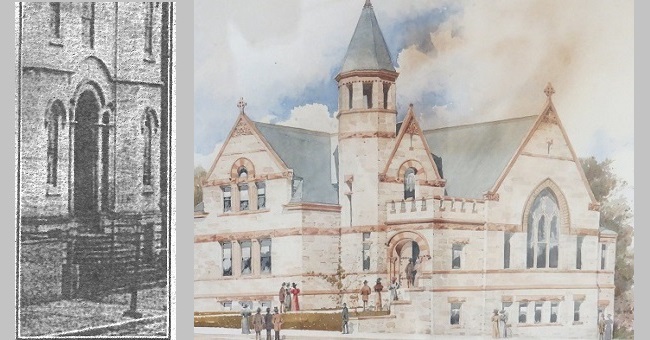by Mike Roberts, Church Historian
During the last quarter of the 19th century, both our church and the city of Cincinnati experienced turbulent upturns and plunges in fortune. The economics of the period saw several boom and bust cycles in the national economy that were strongly felt locally. By the late 1870’s our church was facing a deepening deficit, which prompted our minister, Rev. J.M. Bailey, to tender his resignation.
In his letter to the Board of Trustees he stated that “I cannot find words sufficiently apt or strong to express the sympathy I feel for those who earnestly desire to aid in the support of the church they love; yet, by reason of the appalling depressions of business and the financial stringencies that are upon us, they find themselves utterly unable to do so.”
He went on to say that the burden which had been gladly borne by the many now fell on a few and that his resignation would ease the financial burden on the church.
The city itself had become one of the most corruptly governed cities in the United States. Anger at that corruption vented itself in the worst possible way in March of 1884 when dissatisfaction with lenient sentences given to two premeditating murderers erupted into a full-scale riot.
After three days of violent confrontation, 54 were dead, 200 injured and the county court house destroyed. It is mentioned in numerous accounts as one of the worst urban riots in the history of the country. While no mention of the riots is to be found in the records of our church, it was shortly after this event that talk began of moving out of downtown.
Eventually, by 1890, a plan was activated to sell the Plum Street facility to the Unity Church for $30,000. In the meantime, the board authorized the leasing of a church on McMillan Avenue. City directories of the time show its location only as being on the north side of McMillan near Gilbert. A drive up McMillan today shows no church on that side of the street anywhere near Gilbert.
The move to Walnut Hills, while possibly goaded by financial troubles, riots and the overcrowded conditions of downtown, may have been driven more by environmental concerns. Descriptions of the city in the 1880’s depict a crowded, urban, heavily industrialized environment enveloped by a perpetual cloud of pea soup thick smog for six days a week. Residents were fleeing the noxious atmosphere by the thousands. Those who took to the hills which surrounded the city could look downward on where the city should be but could rarely actually see it.
When they looked upward, they saw a most unfamiliar site: the sun. A promotional brochure put out by the city stated “Here upon these enchanting hills and in these inviting valleys will finally gather the greater part of the population, leaving the city to the smoke and heat when the labors of the day are done.”
After six years of leasing the site on McMillan, our forebears resolved to build a new church on Essex Place about one mile from the McMillan location. The congregation remained there for nearly 70 years.
Images, left to right: Plum Street building and Essex Place building.

